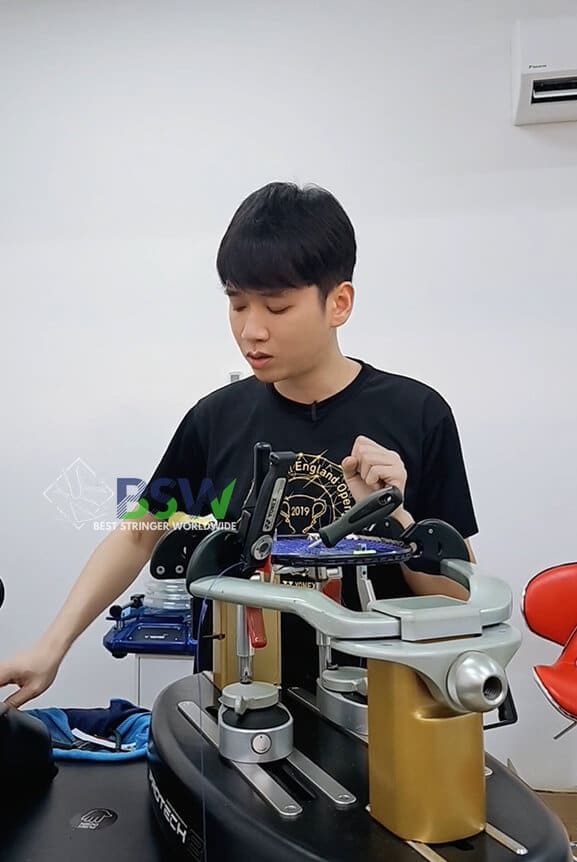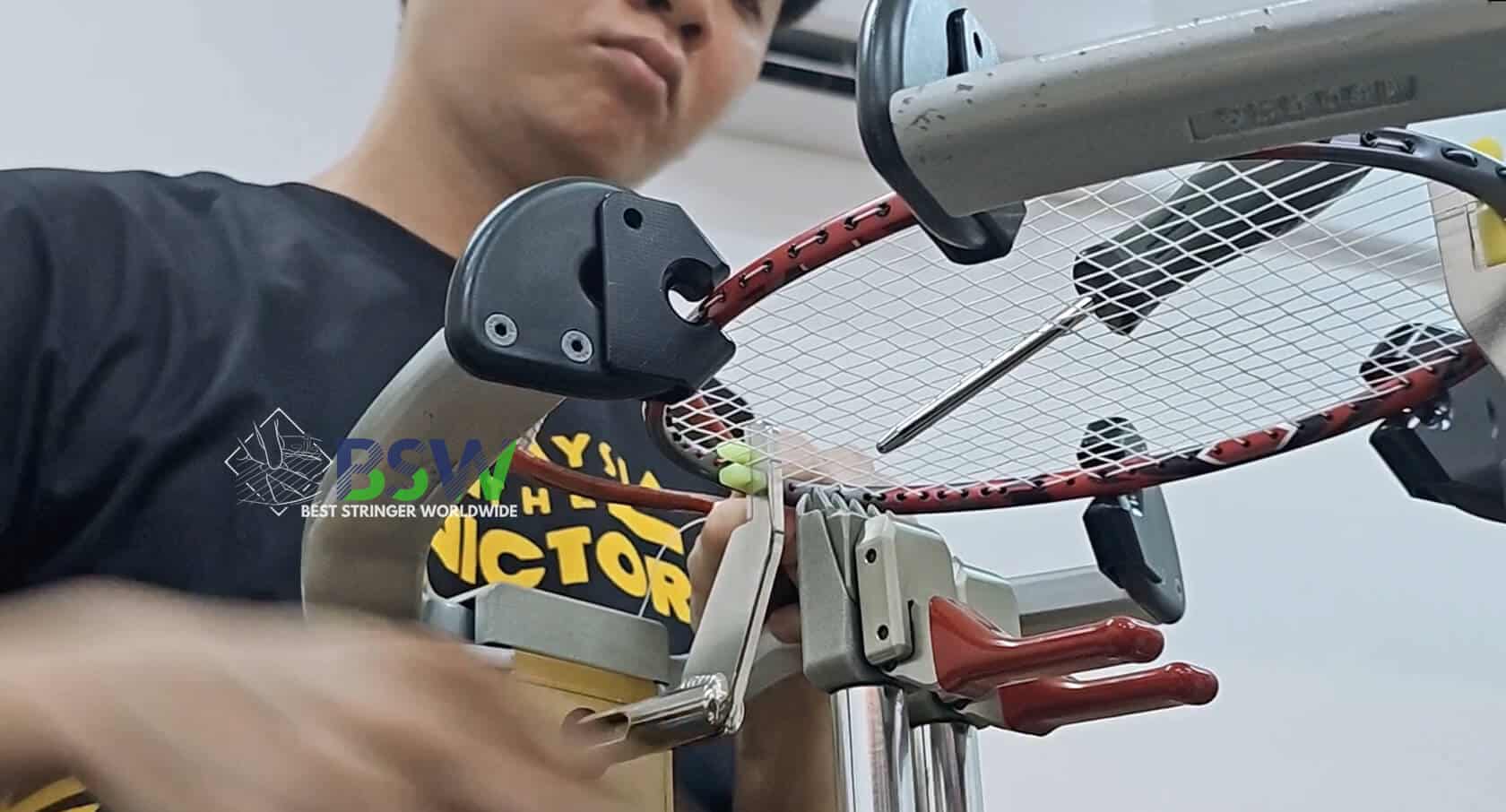Hey there, badminton lover and stringer. Ever picked up a racquet and thought, “This just doesn’t feel right in my hand”? Well, you’re not alone. Choosing the right grip size is super important when you’re starting out in badminton, but it’s often overlooked. Don’t worry, though – we’ve got your back! Here at Best Stringer Worldwide (BSW), we’re all about helping you find that perfect fit. Think of this guide as your friendly chat with a badminton pro, helping you understand why grip size matters and how to find the one that’ll make your game sing. Ready to get a grip on things? Let’s dive in!
Use this interactive simulator to find your ideal grip size based on your hand measurements and playing style. Remember, this is a guide, and personal preference always plays a role in your final choice.
Understanding Badminton Racquet Grip Sizes
Many beginners overlook the importance of grip size when purchasing their first badminton racquet. They often buy racquets online without trying them, resulting in grips that are either too thin (making it hard to hold securely) or too thick (causing difficulty in maintaining a relaxed grip and affecting finger flexion during shots).
The general rule of thumb for a proper grip size is: when holding the racquet with a forehand grip, your thumb and forefinger should firmly grasp the handle, while the other three fingers should comfortably wrap around it, leaving a small gap in your palm. However, the best way to determine your ideal grip size is to try swinging the racquet yourself – your personal feel is the most important factor.
Grip Size Measurements: Understanding the ‘G’ Scale
Badminton racquet grip sizes are typically denoted by ‘G’ (grip) followed by a number, ranging from G0 to G5. The larger the number, the thinner and lighter the grip. Here’s a breakdown of common grip sizes:
| Grip Size | Circumference (mm) | Common Market |
|---|---|---|
| G3 | 89 | Europe, America |
| G4 | 86 | Asia |
| G5 | 83 | Asia |
This table provides a quick reference for grip sizes and their prevalence in different markets. However, remember that personal preference should always guide your final decision.
The Importance of Grip in Badminton Performance
The grip is the only part of the racquet in direct contact with your body, making it crucial for transmitting feedback during shots. This is why racquet manufacturers invest heavily in developing grip technologies, focusing on grip tapes and overgrips.
Natural vs. Synthetic Grip Materials
High-end badminton racquets often feature natural leather grips. While expensive, these grips offer several advantages:
- Durability
- Premium feel
- Harder material allowing for more precise grip on the racquet’s eight edges
- Easier adjustment of grip during play
However, natural leather grips can transmit more vibration to the hand.
Synthetic grip materials, especially thicker ones, offer:
- Reduced vibration transfer
- Filtration of most oscillations
- More comfortable hand feel
The trade-off is that synthetic grips can make the impact feel less precise.

Customizing Your Grip
Players can customize their grip by adding overgrips to achieve their preferred thickness. However, it’s important to note that while additional overgrips improve shock absorption, they can also diminish the precision of your touch on the shuttle.
Grip Size and Stringing: The Connection
Understanding grip sizes is not only crucial for player comfort but also plays a significant role in racquet stringing. As part of our badminton stringing courses at BSW, we emphasize the importance of grip size in relation to string tension and overall racquet performance.
A properly sized grip allows for better control over the racquet during the stringing process, ensuring that the strings are tensioned evenly across the frame. This knowledge is an integral part of our racquet stringing course curriculum and is essential for anyone pursuing badminton stringing certification.
Practical Tips for Choosing Your Grip Size
- Measure your hand: Measure the distance from the tip of your ring finger to the middle crease of your palm.
- Try before you buy: Whenever possible, test racquets with different grip sizes before making a purchase.
- Consider your playing style: Power players might prefer slightly smaller grips, while control-oriented players might opt for larger grips.
- Account for overgrips: If you plan to use overgrips, choose a base grip size slightly smaller than your ideal size.
- Consult a professional: Visit a specialized badminton store or consult with certified stringers for personalized advice.
At Best Stringer Worldwide (BSW), we incorporate grip size education into our comprehensive badminton stringing courses. Understanding the nuances of grip sizes and their impact on player performance is a key component of our badminton stringing certification program.
By mastering these concepts, aspiring stringers can provide better service to players, offering not just expert stringing but also valuable advice on racquet customization. This holistic approach to racquet preparation is what sets apart the professionals in the field of badminton equipment management.
Whether you’re a player looking to optimize your equipment or a stringer aiming to enhance your skills, understanding grip sizes is a crucial step in your badminton journey. With the knowledge shared in this guide and the hands-on experience gained through our courses, you’ll be well-equipped to make informed decisions about badminton racquets and their preparation.

About Best Stringer Worldwide
Best Stringer Worldwide is a comprehensive badminton and tennis stringing education program. We provide in-depth training on stringing techniques, racquet technology, and player-specific customization. Our curriculum is designed to help stringers understand and meet the needs of all badminton players, from casual enthusiasts to competitive athletes.
Read More